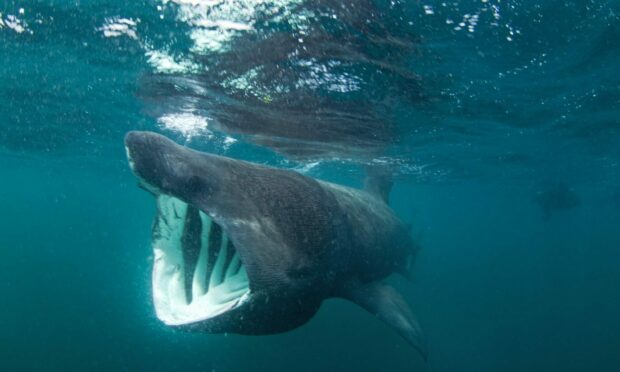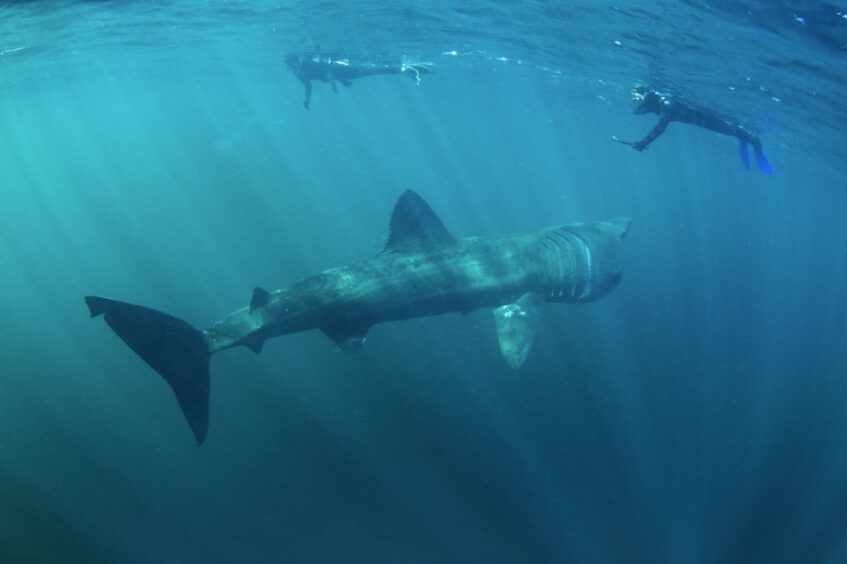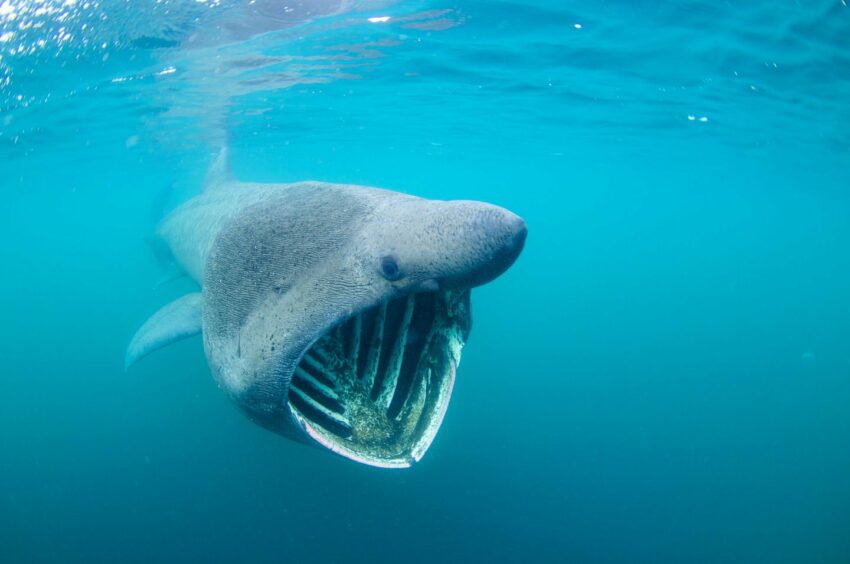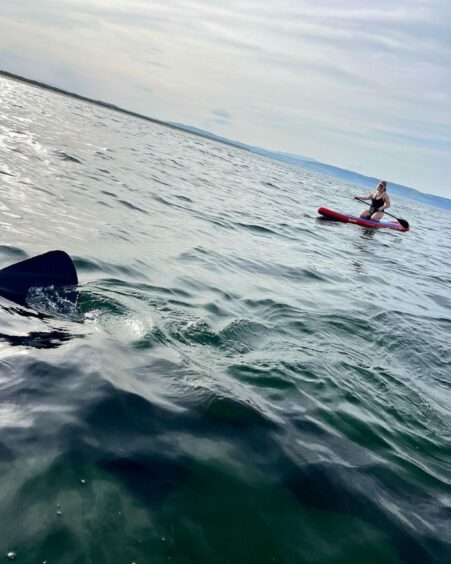It may come as a surprise to learn that sharks are no strangers to Scottish waters.
Basking sharks have been in the spotlight after a rise in sightings this year.
This may be down to Facebook groups dedicated to wildlife spotting or even more people enjoying paddleboarding in the open waters and coming across the giants.
A couple of paddleboarders recently made headlines following their “lucky” encounter with basking sharks just off the coast of Nairn.
The pair had paddled nearly 230ft off the coast and found themselves close to a group of 10 sharks, who then circled them.
Basking Shark Scotland, based in Oban organises tours to help people safely — and respectfully — encounter the giants.
They have been running for over 10 years across the west coast.
Rosie Bennett, who has worked with the tour company for the last year, shared where and when basking sharks can be spotted and if they are dangerous to humans.
Where and when can you spot basking sharks in Scotland?
Basking sharks are often seen in Scottish waters between May and October, with their peak season lasting from July until September.
They are often spotted in groups on both the west and east coast of Scotland, and there’s a marine protected area for them between Mull and the Isle of Skye.
But they can be found as far north as Orkney and Shetland.
According to Rosie, the RSPB’s Troup Head Nature Reserve in Banff is a prime location for spotting sharks from the land as they tend to venture quite close to the shore there.
Although she says there is still a lot of research to be done, it is believed they come to Scotland to breed.
Once the season is over, they travel south in search of warmer waters.
Are basking sharks dangerous?
Basking sharks can grow up to 10 metres long and have huge mouths, that can open as far as a metre wide.
Don’t start thinking about movie monsters like Jaws, though.
Because basking sharks are filter feeders.
That’s why they are often spotted cruising around with their mouths open wide to draw in plankton, which blooms in spring.
Although, with their mouths closed and pointed noses they can sometimes resemble the terrifying great white.
Basking sharks are the second-largest filter-feeding sharks in the world, but according to Rosie the “gentle giants” are not particularly bothered by people.
“In terms of dangers to people, they are feeding on microscopic plankton, so people are way too big for them,” she laughed.
“Basking sharks aren’t particularly bothered by people, especially when they’re feeding – that’s all they’re there to do, and they’re just carrying on living their best life focusing on the food.”
Advice on spotting the ‘gentle giants’?
If you are watching from the land, they can normally be spotted by the tell-tale fins breaching the surface.
Because they do come so close to the shore, people are often able to spot them quite easily. However, Rosie advises it’s “always worth” taking binoculars in case they are feeding further out.
Basking Shark Scotland runs trips with experts onboard to watch the behaviour of the sharks and monitor encounters.
They always try to put people in the water away from the basking sharks but try to work out where they’re going so people do get a chance to encounter the wild animals.
For those on paddleboards or going out on boats themselves to try to catch a close-up, she advises against trying to “chase” the sharks.
Rosie instead recommends watching and observing them, insisting it’s all about putting yourself in the right place for them to come to you.
“I don’t think you should ever take that choice away from the wildlife,” she said.
“Let it come to you because it can, and then you will get some of the best interactions that way.
She also warned that it is illegal to disturb any sort of animal unnecessarily, and said people should avoid chasing or touching the sharks.
“It’s about being respectful, and not chasing these animals,” she finished.






Conversation